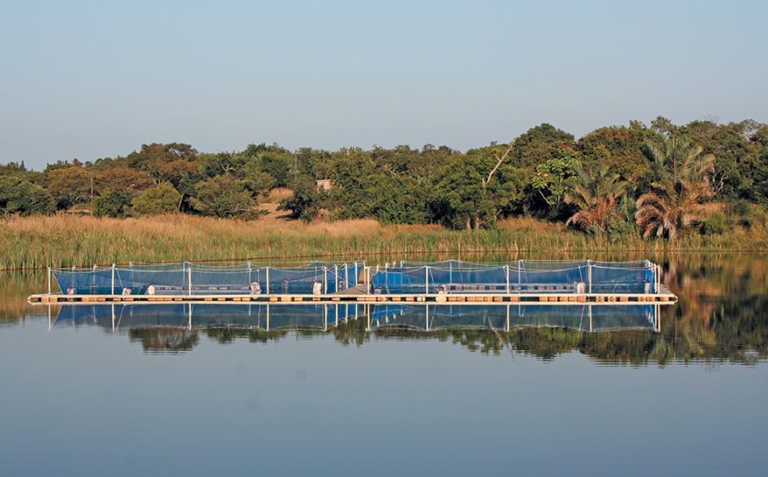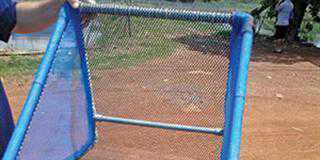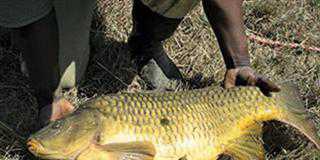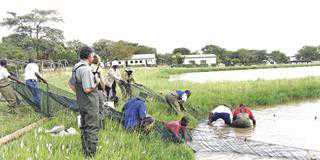
Photo: Nicholas James
Cage culture of tilapia is becoming increasingly successful in Bangladesh, according to that country’s national department of fisheries. Simple 6m x 3m x 2m cages, constructed of bamboo, netting and plastic drum floats, are placed in large water bodies such as dams and rivers with slow-flowing, clean water.
READ Small aquaculture systems: the simpler, the better!
The cages are stocked with male GIFT strain tilapia of 15g each, at a rate of 1 000 to 1 200 per cage. Fed with 25% to 30% protein tilapia pellets, the fish take four to six months to reach 500g, at which stage they are harvested.
Cage culture is particularly popular amongst poor, landless people, and so many are now practising this form of aquaculture that commercial ventures have begun to emerge.
Cage culture in South Africa
A study of topographical maps in South Africa’s warmer provinces show just how many large dams there are in the country.
According to the Department of Water and Sanitation, Limpopo has 28 dams that have a capacity of more than 0,6 million cubic metres.
The largest of these is the De Hoop Dam at 349 million cubic metres. Mpumalanga is home to 22 dams with a capacity of at least 1,9 million cubic metres, the biggest being Heyshope Dam, at 445 million cubic metres.
That’s a total of 50 large dams! Yet the amount of aquacultural activity in this giant resource amounts to almost zero.
Pollution and de-oxygenation
One of the concerns raised about cage culture is that the fish and feed waste result in pollution and de-oxygenation.
This is exaggerated.
Fish, especially those at high density, must have clean water to thrive. Polluted or de-oxygenated dam water is simply unsuitable for them, so concerns for other water users can be laid to rest.
Most of these dams serve as reservoirs for irrigation, and any micro-enrichment from fish culture would not contaminate crops in the least.
Temperature is also raised as a concern, yet for no good reason. Due to the regions’ warm summers, especially at low altitudes, many dams would be ideal for tilapia culture from October to May.
This would allow for an eight-month growing period, far longer than in Bangladesh.
Fingerlings stocked in spring, when the water temperature is above 20°C, would be harvested well before the water cools to below this in autumn.
Job creation
Many of these large dams are in poor rural areas. Using these water resources to alleviate this poverty should be a priority.
As many Lowveld rivers have already been invaded by Nile tilapia from Zimbabwe and Mozambique, farming the best strains of GIFT and other improved tilapia would pose no additional environmental threat, and would offer poor communities employment.
If the Department of Agriculture, Forestry and Fisheries were serious about aquaculture promotion, cage construction, fingerlings and feed would be subsidised until such projects became self-sustaining.
With a projected yield of 500kg to 600kg per cage, sold at R20 000, this should not take long.











